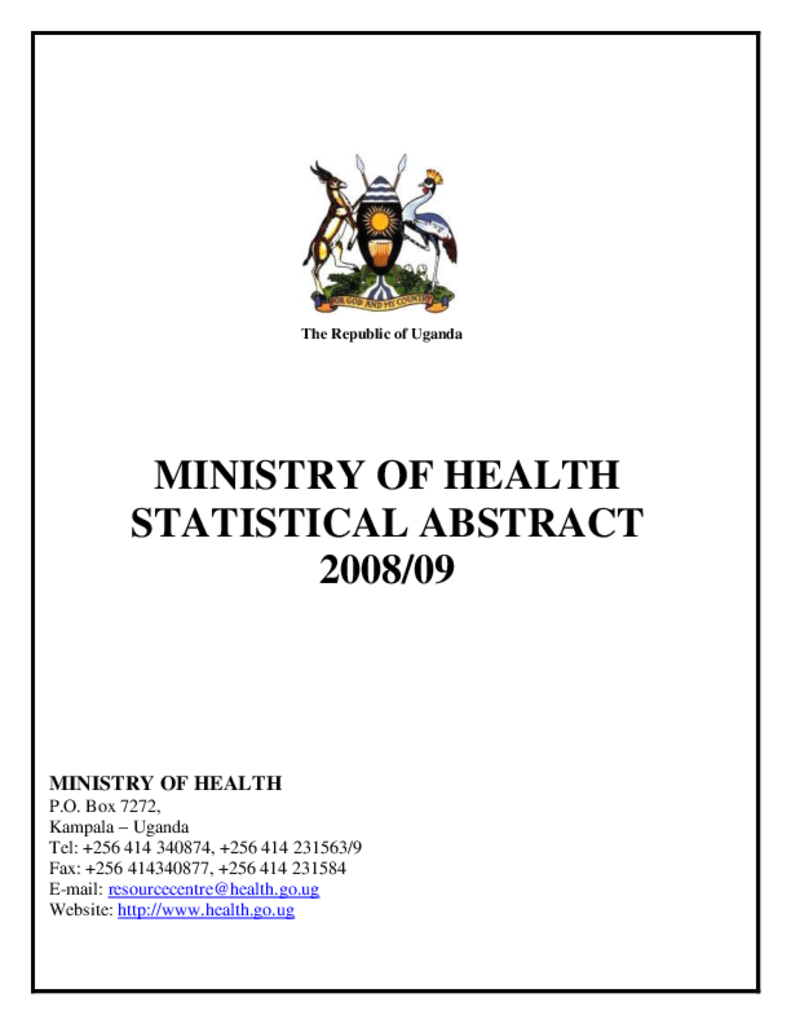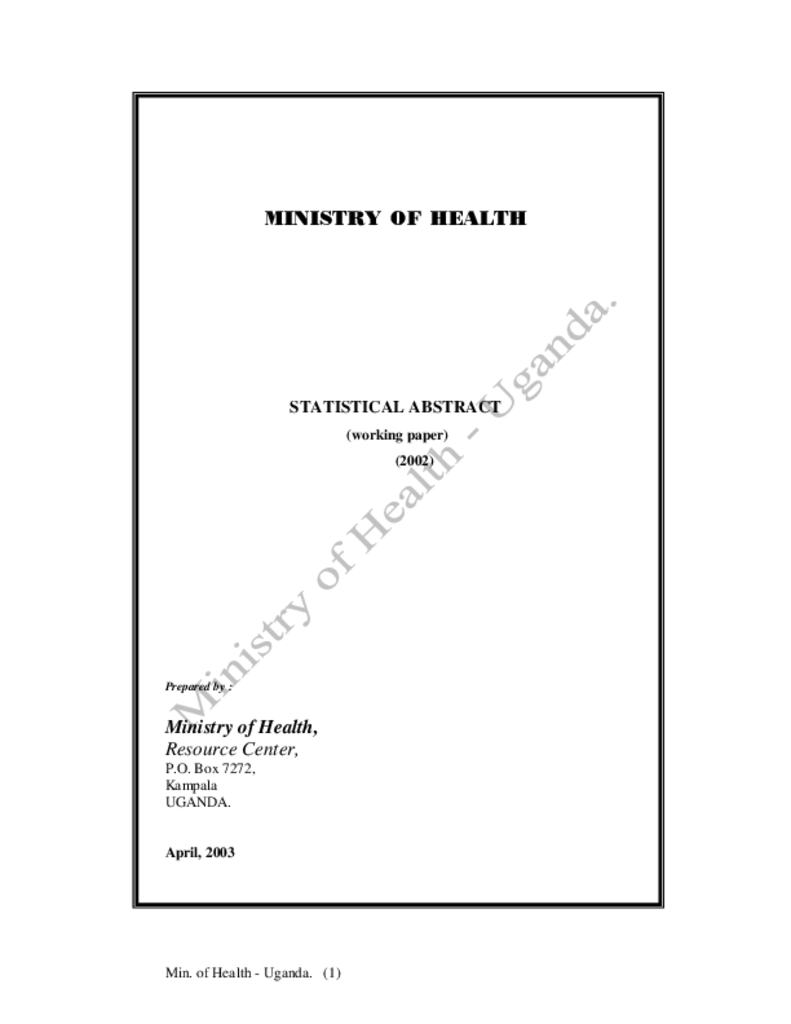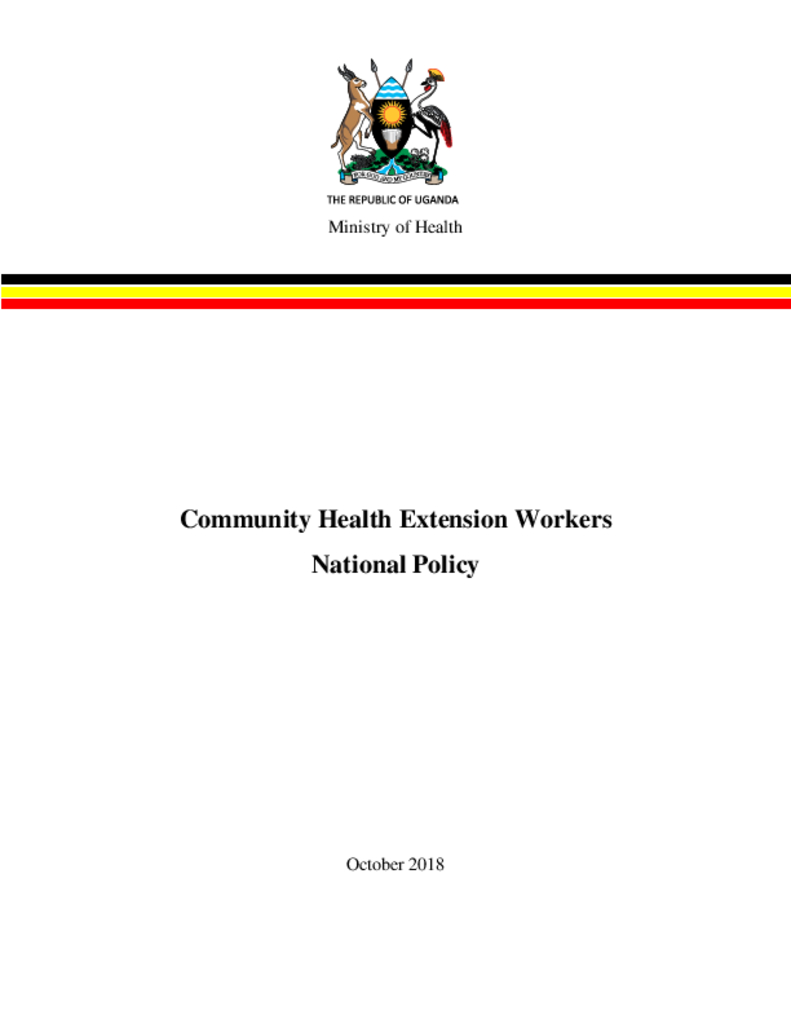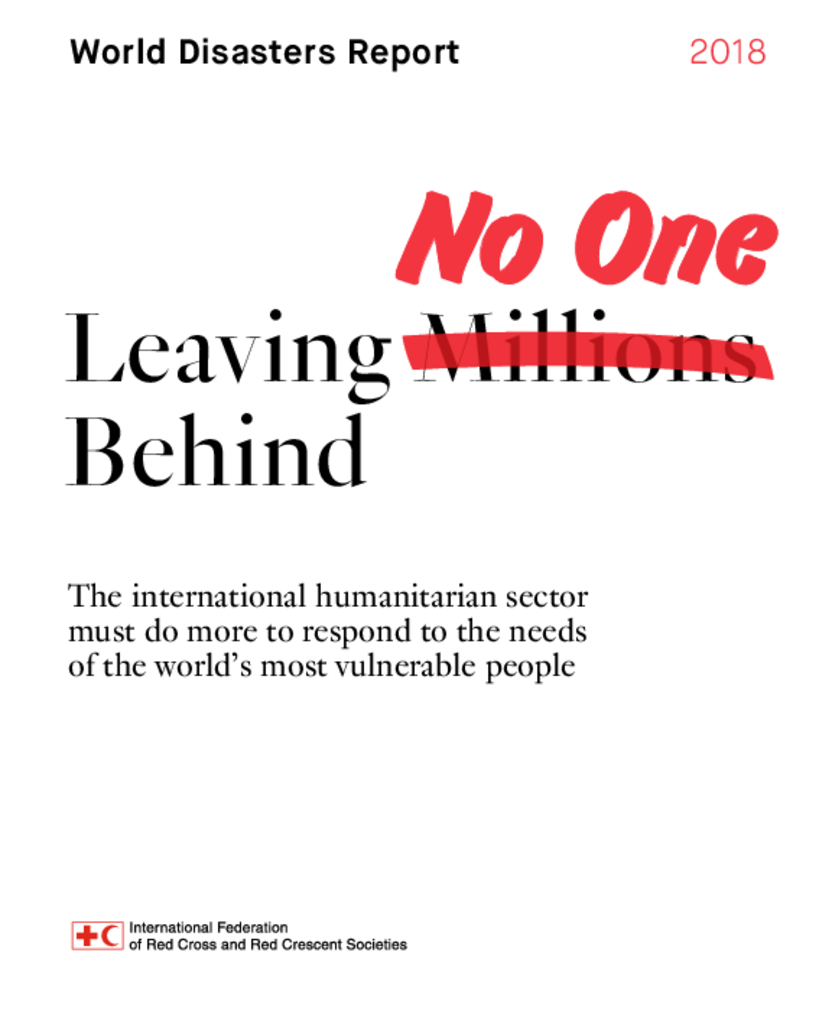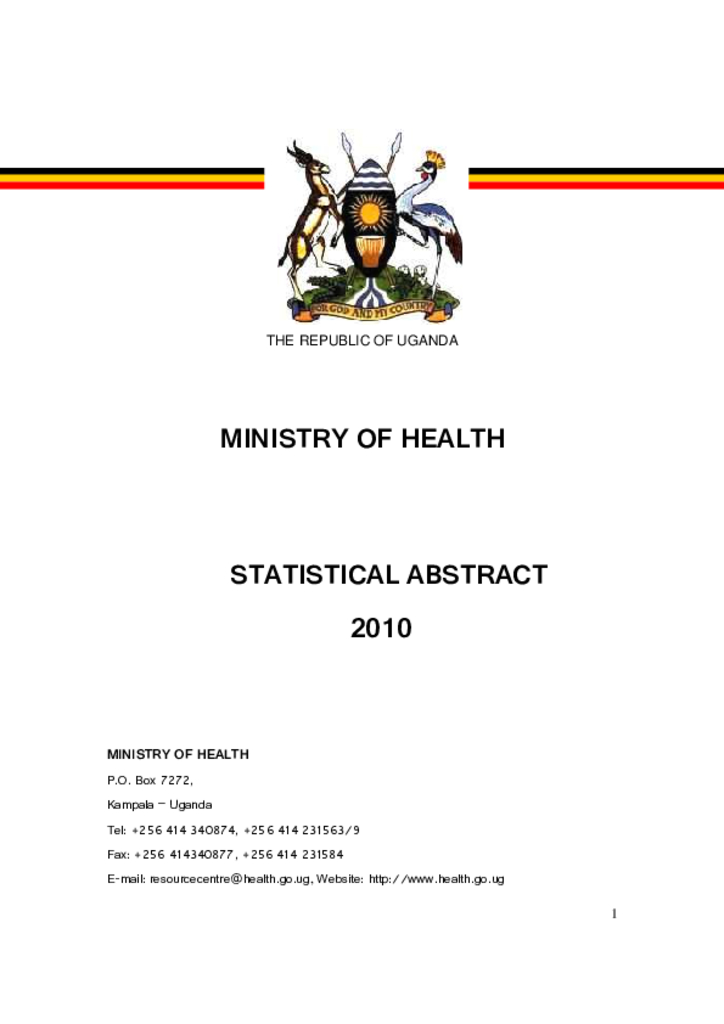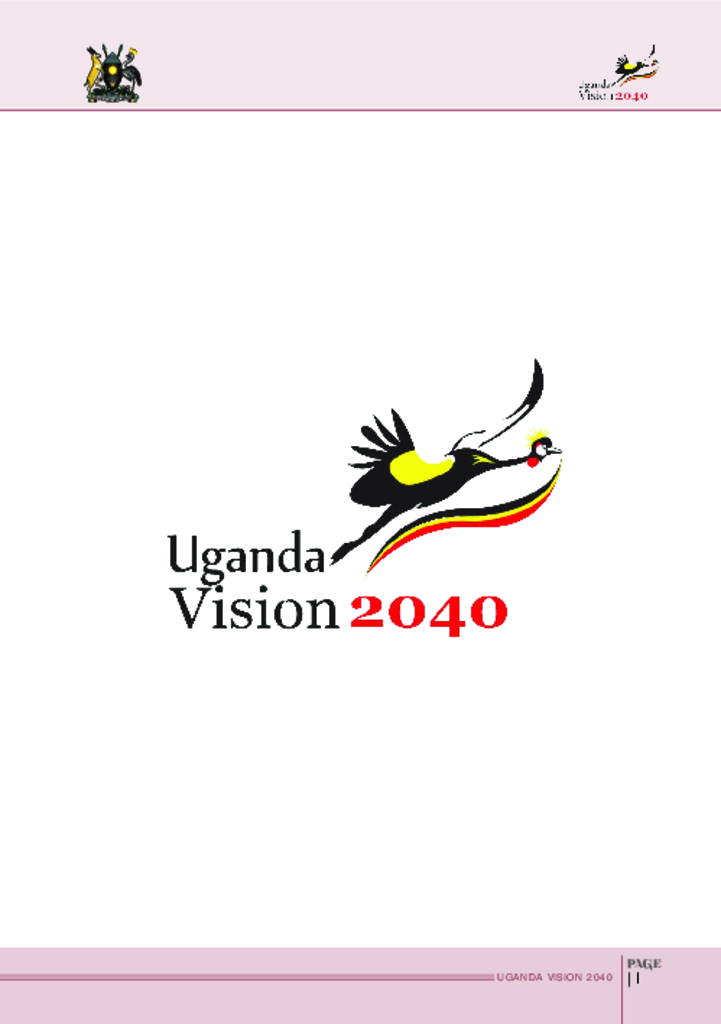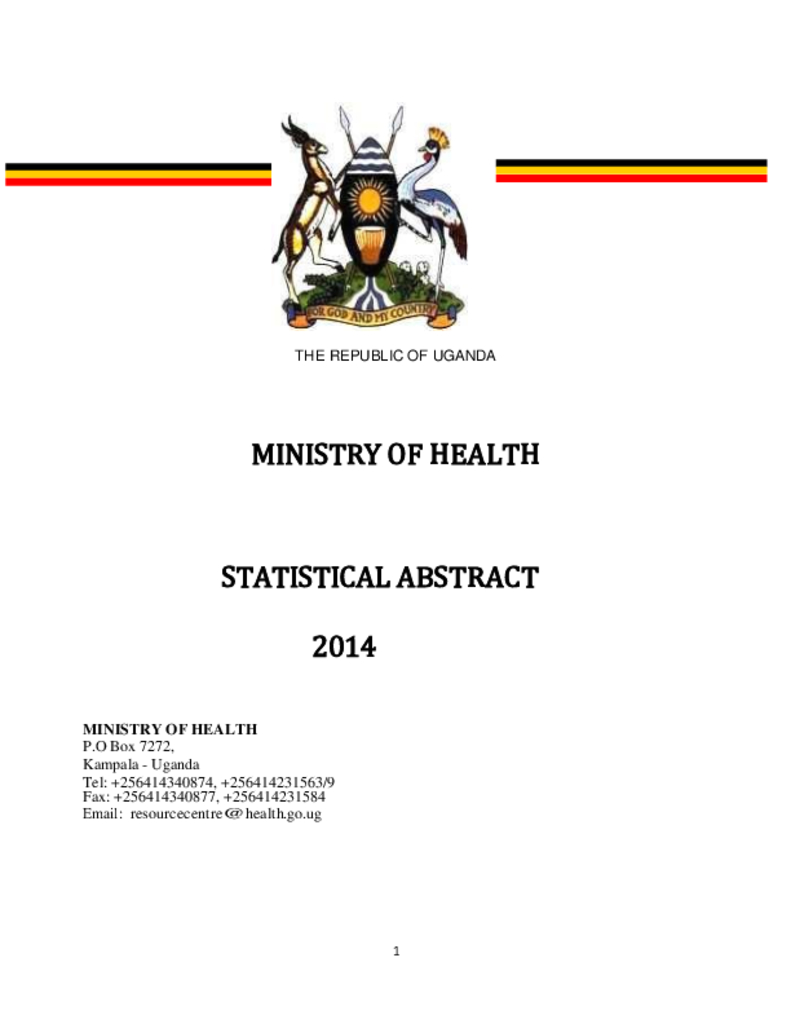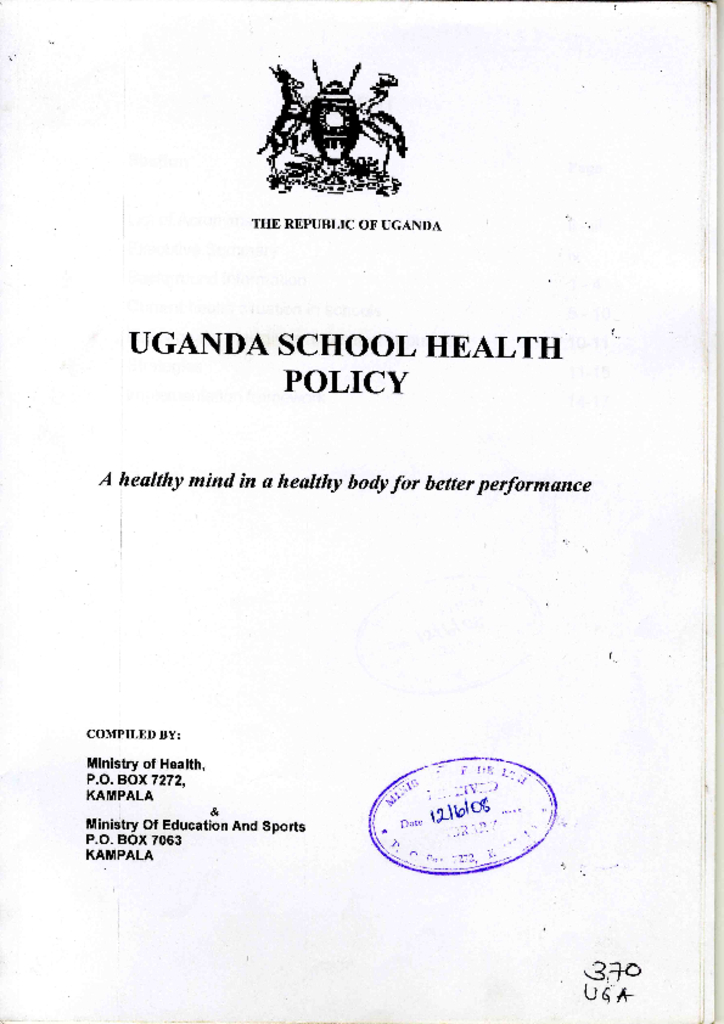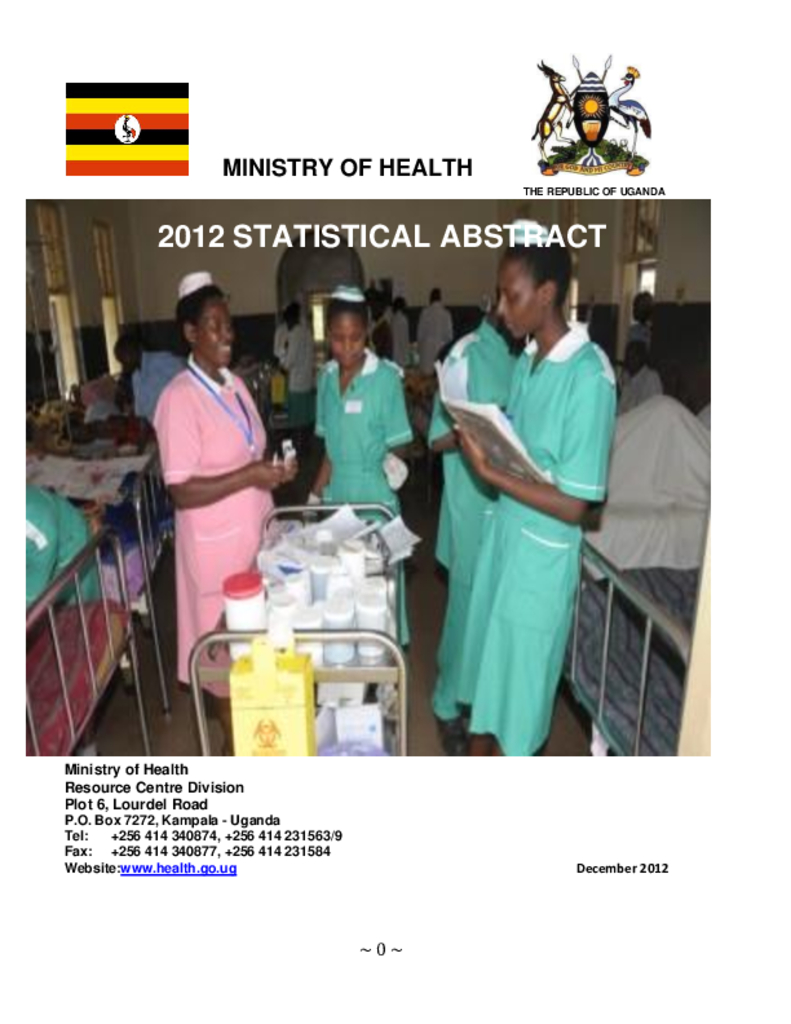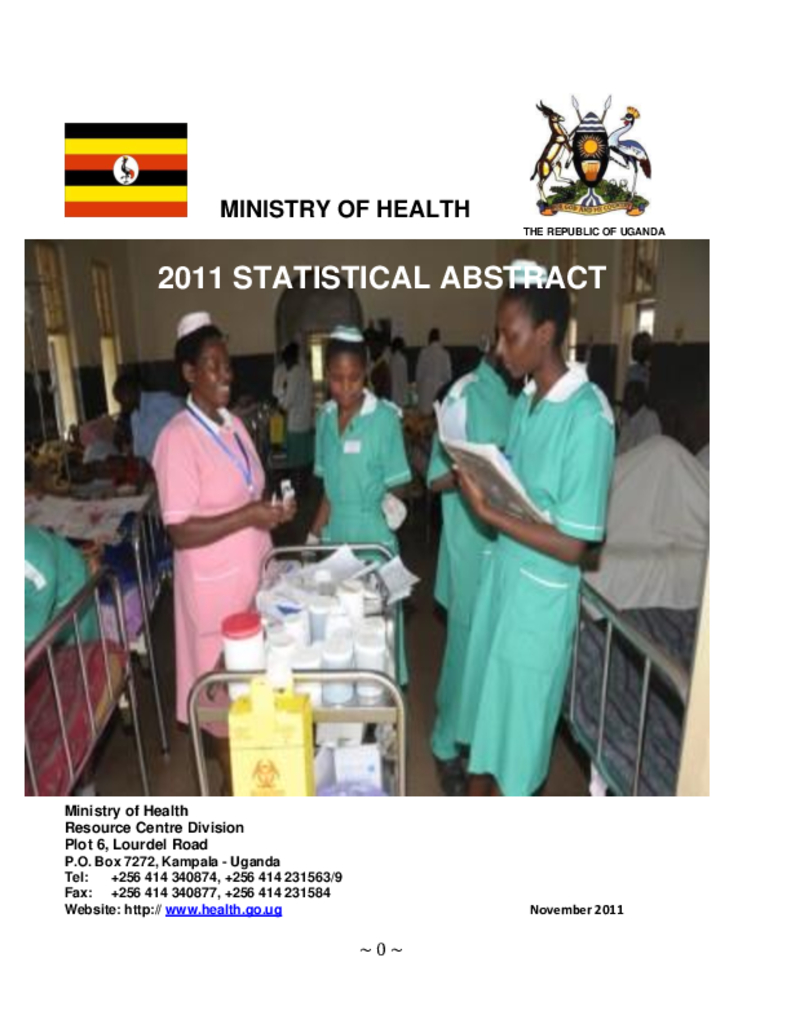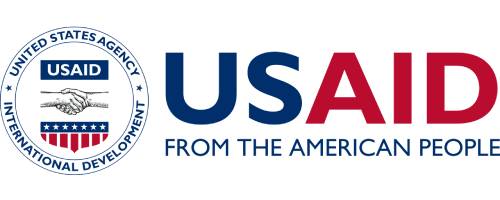The Ministry of Health hereby presents the Statistical Abstract for the financial year 2008/09. It is a comprehensive summary of statistics generated from routine health management information system and health surveys in the sector. It gives highlights on morbidity and mortality status, health infrastructure, drug logistics, human resource and financial summaries among others.
The Ministry of Health hereby presents the Statistical Abstract, 2002. The Health Management Information System (HMIS) and Morbidity and Mortality surveys by the Resource Center of the Ministry of Health and partner agencies yield a wide range of health and Health related statistics. These help to monitor the relationship between the inputs to health sector, and related outputs.
This Statistical Abstract is designed to serve as a convenient document for statistical reference in planning, monitoring and evaluation; and a guide to
other statistical publications.
In 2001, Ministry of Health established the Village Health Teams (VHT) strategy as an innovative approach to empower communities to participate in improving their own health as well as strengthen the delivery of health services at both the community and house hold levels. Despite implementing this strategy for 15 years, the disease burden from preventable causes such as malaria, malnutrition, HIV/AIDS, Tuberculosis, diarrheal diseases and diseases related to poor sanitation and personal hygiene, remains high, thus contributing to the poor health statistics of the country
The 2018 World Disasters Report asks challenging questions of affected states, admittedly overburdened donors, and local and international humanitarian organizations. It includes a strong call for more, for better and for more equitable, funding and action to meet the rising needs. It also calls for a more conscious and transparent approach to ensuring the people in greatest need are placed first in line for assistance.
The Ministry of Health Statistical Abstract of 2009/10 is the 2nd of its kind to be compiled in the Health Sector Stratigic Plan II. it is a comprehensive summary of statistics generated from the routine health management Information System and health Surveys in the sector.
Uganda Vision 2040 provides development paths and strategies to operationalize Uganda’s Vision statement which is “A Transformed Ugandan Society from a Peasant to a Modern and Prosperous Country within 30 years” as approved by Cabinet in 2007. It aims at transforming Uganda from a predominantly peasant and low income country to a competitive upper middle income country.
Uganda covers 241,551 square kilometers of which 197,323 square kilometers are land area. The country is divided into 112 Districts all of which have a decentralized local governance system. Uganda has one of the highest growth rates in the world standing at a rate of 3.2% per annum and higher than the Sub-Saharan Africa average of 2.4%.
Fifty percent of Uganda's population is under 15 years of age. The Universal Primary Education Programme has enabled 7 million children, which is over 30% of the entire population, to be in school. When Universal Secondary Education is introduced,the number of children in school could rise to 9 million or 40% of the population.
Despite a general increase in the resources allocated to the health sector from both Government of Uganda and donor projects over the last 5 years, the percentage of government allocation to health as a proportion of the total Government of Uganda budget has significantly declined from FY 2009/10
The publication of this first comprehensive and detailed Uganda National Drug Policy marks a significant step forward in the overall development of national health services in general and national pharmaceutical services in particular. Now for the first time we have available a vital reference point and a basis for the planning of appropriate interventions necessary to make a significant positive impact on the extent and quality of pharmaceutical service provision.
The Ministry of Health has been producing the Annual Statistical Abstract since 2009. With support from UBOS and other implementing partners, the Annual Statistical Abstract is produced to highlight progress in the health sector basing on selected health indicators depending on the availability of data majorly through the HMIS system but also through other databases.
The 2011 Ministry of Health Statistical Abstract is divided into three chapters as explained below; Chapter one is an introduction that covers a brief description about the Ministry of Health, its vision, goal and objectives.
Chapter two covers the Resource Statistics. These include the Health Inputs such as the finances allocated to the health sector, the human resource component in the health sector, distribution of health facilities as well as availability of beds in the different health facilities.
An Act to provide for compensation to workers for injuries suffered and scheduled diseases incurred in the course of their employment.
